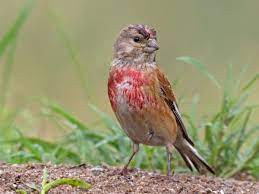The Kennedy Wild Bird Food Guide to the Redpoll
Whilst the common redpoll visits the UK during the winter, it is not one of the most common types of birds in the UK as it doesn't actually breed here. In 2000, the lesser redpoll was classed as a separate species to the common redpoll Unlike the common variant, it breeds in the UK. There are only a few differences between the two species, but as you're more likely to see the lesser in your garden, it is the one we'll be focusing on in our bird guide. It can be seen in woodlands and gardens across the UK apart from the Orkney and Shetland Islands. In the Midlands and south of England, they aren't as common but can be seen when larger numbers come to the UK during the winter.What does a redpoll bird look like?
Is it a linnet or redpoll? Is it a common or a lesser ? It can be difficult to tell the three of these species apart but there are a few discerning characteristics which will help you identify which bird you're looking at. A lesser variant has a red forehead and during the breeding season, a lighter pink extends down the neck and throat of the male birds, but less so with females. Both the female and male have a black streak on their backs and small goatee-like black beards.
How to identify a lesser redpoll from a common redpoll and a linnet?
The common variantl is paler and larger than a lesser and if you think you're looking at a common, chance is you're actually looking at a lesser redpoll. According to the RSPB, there are only 1-4 breeding pairs of common redpolls in the UK, compared to 220,000 lesser breeding pairs. Whilst a linnet, like a lesser also has a red forehead and a pink tone to its breast, it has a grey head and beak which makes it easier to distinguish from the lesser redpoll. Adult Lesser Redpoll Adult Common Redpoll
Adult Common Redpoll
 Adult Linnet
Adult Linnet
What does a redpoll sound like?
The lesser redpoll call is relatively metallic and rattles off a series of low-pitched notes which sound like ñchuch-uch-uch-errrrrî. As they move in flocks listen out for the lesser redpoll song as a small gathering of these sociable birds will liven up any garden. Click here to listenWhere can you spot lesser redpolls?
With an RSPB red UK conservation status, it's important to log all sightings of lesser redpolls which you can do using our BirdSpotter tool. Lesser redpolls can be found throughout the United Kingdom and they can normally be seen in woodlands or among the branches of shrubs and trees in gardens. As they are mainly resident birds, they can be seen all year round.
However, during the winter some lesser redpolls migrate to the south of England in search of a milder climate, making them easier to spot in the region during that time of year.
Lesser redpolls can be found throughout the United Kingdom and they can normally be seen in woodlands or among the branches of shrubs and trees in gardens. As they are mainly resident birds, they can be seen all year round.
However, during the winter some lesser redpolls migrate to the south of England in search of a milder climate, making them easier to spot in the region during that time of year.

